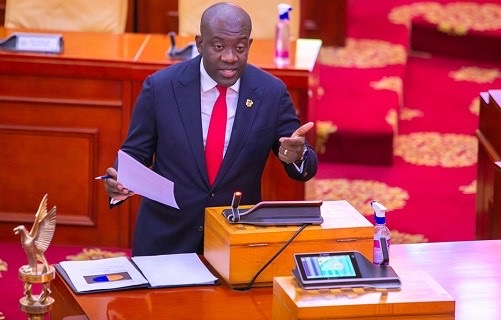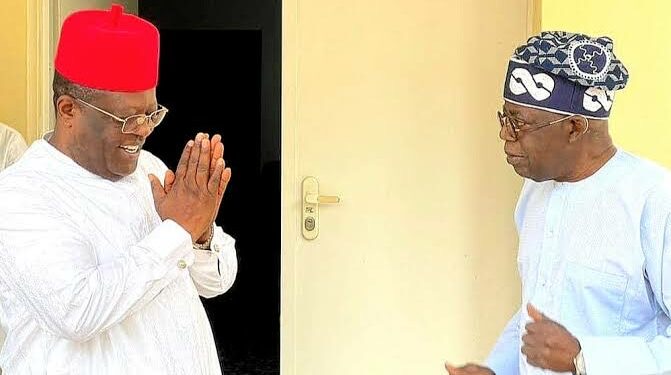Jaramogi Ajuma Oginga Odinga
Raila Amolo Odinga, a native of Luo ethnicity, traces his ancestry to his father, veteran Kenyan politician Jaramogi Oginga Odinga, who rose to prominence during Kenya’s independence movement. Oginga started politics in 1947 after being born in Bondo, Nyanza Province, in 1912.
He led the opposition after serving as Kenya’s first vice president. The term “Not Yet Uhuru” is attributed to him and is in the title of his 1967 autobiography. He alluded to his conviction that Kenya had not yet achieved true freedom despite its independence from British colonialism because of the country’s violent suppression of political dissent. The word “Uhuru” means “freedom” in Swahili. Raila, Jaramogi’s son, spent eight years in prison as well. Oginga passed away on January 20, 1994, at ninety-two.
The Political Rise of Raila Amolo Odinga
born in Maseno, Kenya, in 1945. In the 1970s, Odinga actively began his political career and backed Kenyan government changes. Acquitted of conspiring to assassinate President Daniel Arap Moi in 1982, he spent six years in detention without charge or trial. After this, Odinga was detained twice for advocating against a one-party government but was eventually released. In 1991, Odinga went to Norway to seek safety. But in 1992, he returned to Kenya and won a seat in the National Assembly for his father’s party, the Forum for the Restoration of Democracy-Kenya (FORD-K).
Odinga quit FORD-K and joined the National Development Party (NDP) in 1996 after becoming entangled in a leadership dispute within the party following his father’s death in 1994.
While unsuccessfully running for Kenyan president in 1997 on behalf of the NDP, Odinga was able to hold onto his National Assembly position. After that, he and the NDP backed Moi and the Kenya African National Union (KANU), which Kikuyu ruled. In 2001, Odinga became a member of Moi’s cabinet as minister of energy. The following year, the NDP was merged into the ruling party, and Odinga was appointed secretary-general of KANU.
Odinga quit FORD-K and joined the National Development Party (NDP) in 1996 after becoming entangled in a leadership dispute within the party following his father’s death in 1994.
While unsuccessfully running for Kenyan president in 1997 on behalf of the NDP, Odinga was able to hold onto his National Assembly position. After that, he and the NDP backed Moi and the Kenya African National Union (KANU), which Kikuyu ruled. In 2001, Odinga became a member of Moi’s cabinet as minister of energy. The following year, the NDP was merged into the ruling party, and Odinga was appointed secretary-general of KANU.
Under the direction of former vice president Mwai Kibaki, a Kikuyu, the LDP soon merged with the National Alliance of Kenya (NAK), a coalition of numerous parties, to establish the National Rainbow Coalition (NARC). While the LDP and NAK agreement details were not made public, it was claimed that if Kibaki were elected president, the two parties would agree to distribute cabinet positions and authority fairly, even appointing Odinga to the newly established position of strong prime minister. After the NARC successfully opposed KANU, Kibaki was elected president in December 2002, becoming the first non-KANU leader in Kenya’s history of independence. Odinga and other NARC candidates took home more than half of the National Assembly’s seats.
As a prominent member of the NARC, Odinga was instrumental in ensuring Kibaki’s victory in the election, vigorously advocating for him notwithstanding the candidate’s severe injuries sustained in an automobile accident in the month preceding the voting. Odinga was named minister of roads, public works, and housing by Kibaki after his election. Still, the LDP quickly accused Kibaki of breaking the preelection agreement between the LDP and NAK, which called for a more equitable distribution of cabinet positions and power between the parties.
The plan to establish a solid prime minister position—which Kibaki and his supporters have since abandoned—was one of numerous topics covered at the nation’s constitutional review conference in the spring of 2003 that further heightened tensions between the two NARC factions. In the end, a Kibaki-backed draft constitution with provisions for a strong president and a weak prime minister was put to the people in a referendum held in November 2005. However, Odinga successfully led a campaign against it, and as a result, it was not authorized. Kibaki removed his whole cabinet shortly afterwards, and the following month, he reassembled it without Odinga or many former cabinet members who had backed Odinga.
The 5 Times Raila Odinga Ran For Office Of The President
Out of the five elections, Raila claims to have only conducted four meaningful ones and only lost the first one because he was experimenting. In 1997, he ran for president and came in third, but he was still the Member of Parliament for Lang’ata. He oversaw the union of Mr. Moi’s Kanu party with his own, the NDP, following the election. From June 2001 to June 2002, he was the Energy Minister in Moi’s Cabinet. As part of the merger’s power-sharing agreement, he was chosen as the party’s secretary-general in the ensuing Kanu elections.
They joined the Liberal Democratic Party (LDP), which then joined forces with the National Alliance Party of Kenya (Nak), a coalition formed by Mr. Mwai Kibaki and several other parties, to create the National Rainbow Coalition (Narc), which ultimately emerged victorious in the 2002 election against Mr. Kenyatta. After falling out with Mr. Kibaki, he ran for president in the 2007 race, clouded by the bloodiest post-election violence in Kenyan history. Following the peace negotiations facilitated by the late former UN Secretary-General Kofi Anan, he was named Prime Minister of the ensuing grand coalition.
In addition, Mr. Kenyatta defeated him in the 2013 presidential contest. He did not participate in the October 2017 runoff election after the Supreme Court declared the vote results void. In 2022, he made another presidential run, but William Ruto defeated him. Raila Odinga received 48.85 percent of the vote, while Dr. Ruto received 50.49 percent. Mr. Odinga contested the outcomes at the Supreme Court. The seven-judge panel did, however, maintain Dr. Ruto’s victory. The court declared that it had not discovered any evidence of hacking and that no proof had been presented to implicate Mr. Chebukati or other IEBC employees.
Is he going to run in 2027?
Odinga has clarified that he will back Kalonzo Musyoka in his bid for president in 2027.
He was declaring Kalonzo to be a guy of integrity. Raila will be almost eighty-two years old in 2027. If Ruto decides to run in 2027, Raila will determine how strong his opponent is. Politics has always favoured Raila, the enigma of politics, in a way that makes him appear weak while he is powerful. The majority of political analysts discounted Raila following the 2017 elections. His age was the main factor in this. Nobody anticipated, though, that he would put on his best performance to date in this two-horse presidential contest. What the political stars have in store for Raila by 2027 is unknown. Based on his past performance and his political flexing following the 2022 election, he will be the one to watch when developing President Ruto’s successor in 2032.


